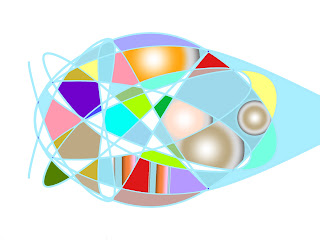Unlike pure entertainment, quality and professional content takes time for digesting, contemplation and engaging. Blogging is not about writing, but about thinking, brainstorming, innovating and sharing.
The “Digital Master” book series includes 28 books to share insight from the multidimensional digital lens and perceive the multi-faceted impact the digital era upon us is making to the businesses and society. The content richness is not for its own sake, but to convey the vision and share the wisdom. Here is the weekly insight of digital leadership, IT Management, and Talent Management.
Three Causes of Overly Narrowed IT Management IT is impacting every business function and is becoming the very driver of digital transformation. With emerging lightweight digital technologies and overwhelming growth of information, forward-thinking organizations declare they are in the information management business to improve business competency and long-term growth. However, many IT organizations still get stuck at the low level of maturity, being perceived as a help desk or a cost center. Here are three causes of overly narrowed IT management.
Shape an Advanced Corporate Board with “Digital Character” Digital is fluid, digital is also complex. It becomes complex if things do interact, particularly in the case of nonlinear interaction and interdependent relationship. To steer the organization in the right direction, contemporary Boards of Directors today need to present strong character and high digital acumen in order to overcome challenges and drive transformative changes smoothly. Character-based leadership is authentic, energetic, and motivational. But more specifically, how to shape an advanced corporate board with digital character?
Three Digital Innovation Practices Digital is the age of innovation. Innovation is a management process, not just serendipitous magic. At today's modern organizations, variety, complexity, diversification, and hyper-connectivity, etc, are the characteristics of the digital innovation ecosystem. Digital innovation has a broader spectrum and enriched context.
The Monthly Keyword Summary: Paradox Oct. 2019 From one generation to the next, the substance of leadership does not change, it’s about the future, change, and influence. However, digital leadership trends will continue to emerge. Here is a set of featured blogs to dig into the “keywords” of the 21st century to brainstorming the future of digital leadership and business transformation.
The Best “Superconsciousness” Quotes of “Digital Master” Oct. 2019 is a series of guidebooks (28 + books) to perceive the multi-faceted impact digital is making to the businesses and society, help forward-thinking organizations navigate through the journey in a systematic way, and avoid “rogue digital.” It perceives the emergent trends of digital leadership, provides advice on how to run a digital organization to unleash its full potential and improve agility, maturity, and provide insight about Change Management. It also instructs the digital workforce on how to shape a game-changing digital mindset and build the right set of digital capabilities to compete for the future. Here is a set of “Superconsciousness” quotes in “Digital Master.”
Blogging is not about writing, but about thinking about the new ideas; it’s not just about WHAT to say, but about WHY to say, and HOW to say it. It reflects the color and shade of your thought patterns, and it indicates the peaks and curves of your thinking waves. Unlike pure entertainment, quality and professional content takes time for digesting, contemplation and engaging, and therefore, it takes time to attract the "hungry minds" and the "deep souls." It’s the journey to amplify diverse voices and deepen digital footprints, and it's the way to harness your innovative spirit.
The “Future of CIO” Blog has reached 5 million page views with 6100+ blog posting in 59+ different categories of leadership, management, strategy, digitalization, change/talent, etc.
Three Causes of Overly Narrowed IT Management IT is impacting every business function and is becoming the very driver of digital transformation. With emerging lightweight digital technologies and overwhelming growth of information, forward-thinking organizations declare they are in the information management business to improve business competency and long-term growth. However, many IT organizations still get stuck at the low level of maturity, being perceived as a help desk or a cost center. Here are three causes of overly narrowed IT management.
Shape an Advanced Corporate Board with “Digital Character” Digital is fluid, digital is also complex. It becomes complex if things do interact, particularly in the case of nonlinear interaction and interdependent relationship. To steer the organization in the right direction, contemporary Boards of Directors today need to present strong character and high digital acumen in order to overcome challenges and drive transformative changes smoothly. Character-based leadership is authentic, energetic, and motivational. But more specifically, how to shape an advanced corporate board with digital character?
Three Digital Innovation Practices Digital is the age of innovation. Innovation is a management process, not just serendipitous magic. At today's modern organizations, variety, complexity, diversification, and hyper-connectivity, etc, are the characteristics of the digital innovation ecosystem. Digital innovation has a broader spectrum and enriched context.
The Monthly Keyword Summary: Paradox Oct. 2019 From one generation to the next, the substance of leadership does not change, it’s about the future, change, and influence. However, digital leadership trends will continue to emerge. Here is a set of featured blogs to dig into the “keywords” of the 21st century to brainstorming the future of digital leadership and business transformation.
The Best “Superconsciousness” Quotes of “Digital Master” Oct. 2019 is a series of guidebooks (28 + books) to perceive the multi-faceted impact digital is making to the businesses and society, help forward-thinking organizations navigate through the journey in a systematic way, and avoid “rogue digital.” It perceives the emergent trends of digital leadership, provides advice on how to run a digital organization to unleash its full potential and improve agility, maturity, and provide insight about Change Management. It also instructs the digital workforce on how to shape a game-changing digital mindset and build the right set of digital capabilities to compete for the future. Here is a set of “Superconsciousness” quotes in “Digital Master.”





































































